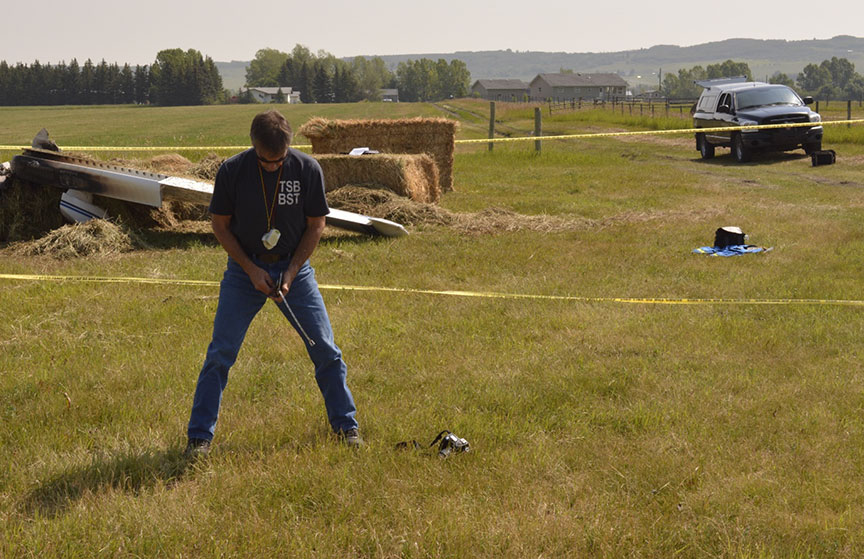Collision with obstacle on takeoff
Piper PA-28-161 Warrior II, C-GVZJ
Black Diamond, Alberta
The occurrence
On , a privately operated Piper PA28-161 Warrior II aircraft was departing a cut hay field near Black Diamond, Alberta. During the take-off, the aircraft collided with hay bales and was destroyed by a post-impact fire. There were two people on board; one received fatal injuries and the other one was seriously injured.
Media materials
News release
Investigation report: July 2018 collision with obstacle on takeoff near Black Diamond, Alberta
Read the news release
Deployment notice
TSB deploys a team of investigators to a small aircraft accident near Black Diamond, Alberta
Edmonton, Alberta, 30 July 2018 - The Transportation Safety Board of Canada (TSB) is deploying a team of investigators to an air accident involving a Piper PA-28-161 near Black Diamond, Alberta. The TSB will gather information and assess the occurrence.
Investigation information
Download high-resolution photos from the TSB Flickr page.
Class of investigation
This is a class 4 investigation. These investigations are limited in scope, and while the final reports may contain limited analysis, they do not contain findings or recommendations. Class 4 investigations are generally completed within 220 days. For more information, see the Policy on Occurrence Classification.
TSB investigation process
There are 3 phases to a TSB investigation
- Field phase: a team of investigators examines the occurrence site and wreckage, interviews witnesses and collects pertinent information.
- Examination and analysis phase: the TSB reviews pertinent records, tests components of the wreckage in the lab, determines the sequence of events and identifies safety deficiencies. When safety deficiencies are suspected or confirmed, the TSB advises the appropriate authority without waiting until publication of the final report.
- Report phase: a confidential draft report is approved by the Board and sent to persons and corporations who are directly concerned by the report. They then have the opportunity to dispute or correct information they believe to be incorrect. The Board considers all representations before approving the final report, which is subsequently released to the public.
For more information, see our Investigation process page.
The TSB is an independent agency that investigates air, marine, pipeline, and rail transportation occurrences. Its sole aim is the advancement of transportation safety. It is not the function of the Board to assign fault or determine civil or criminal liability.
